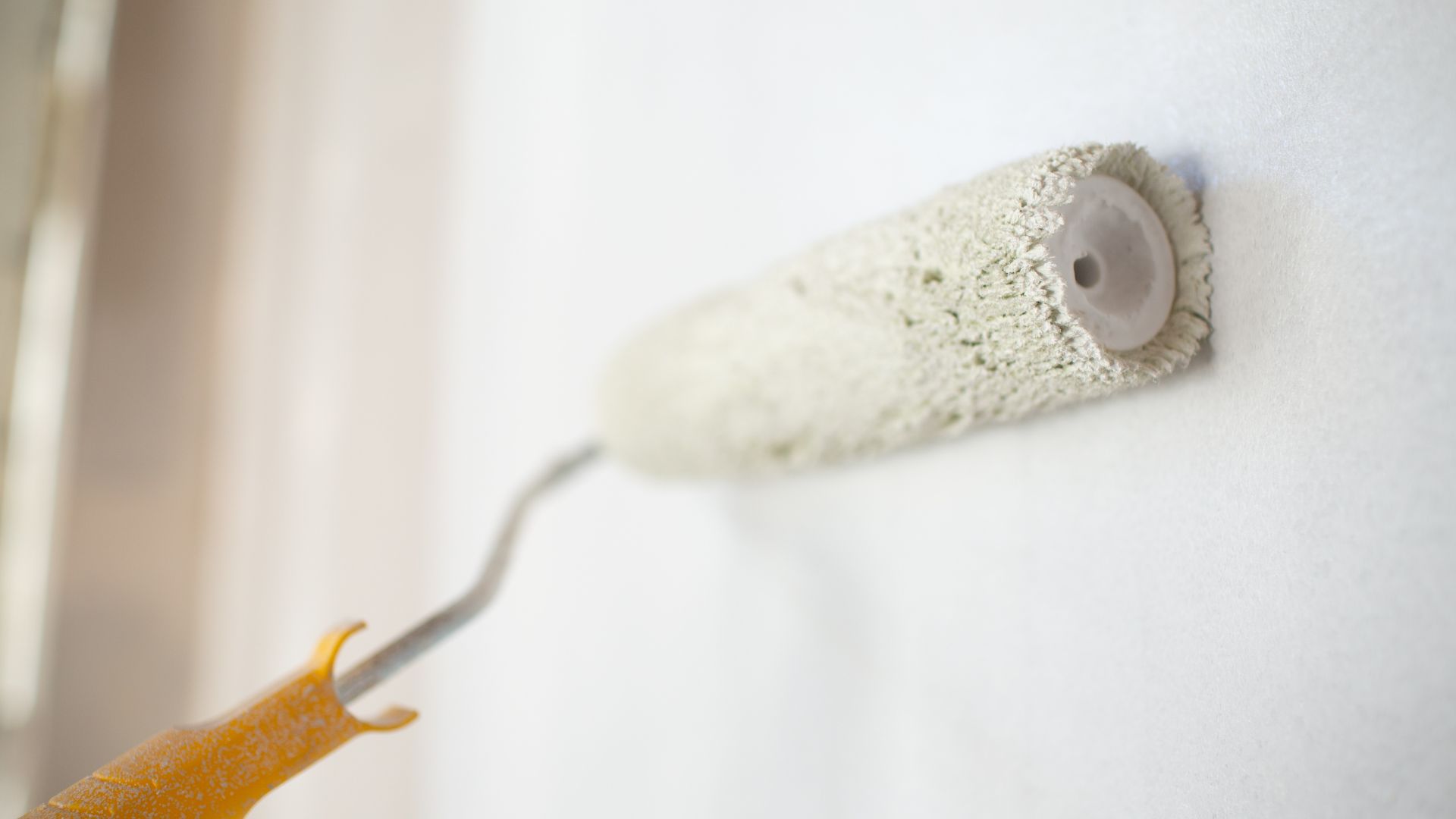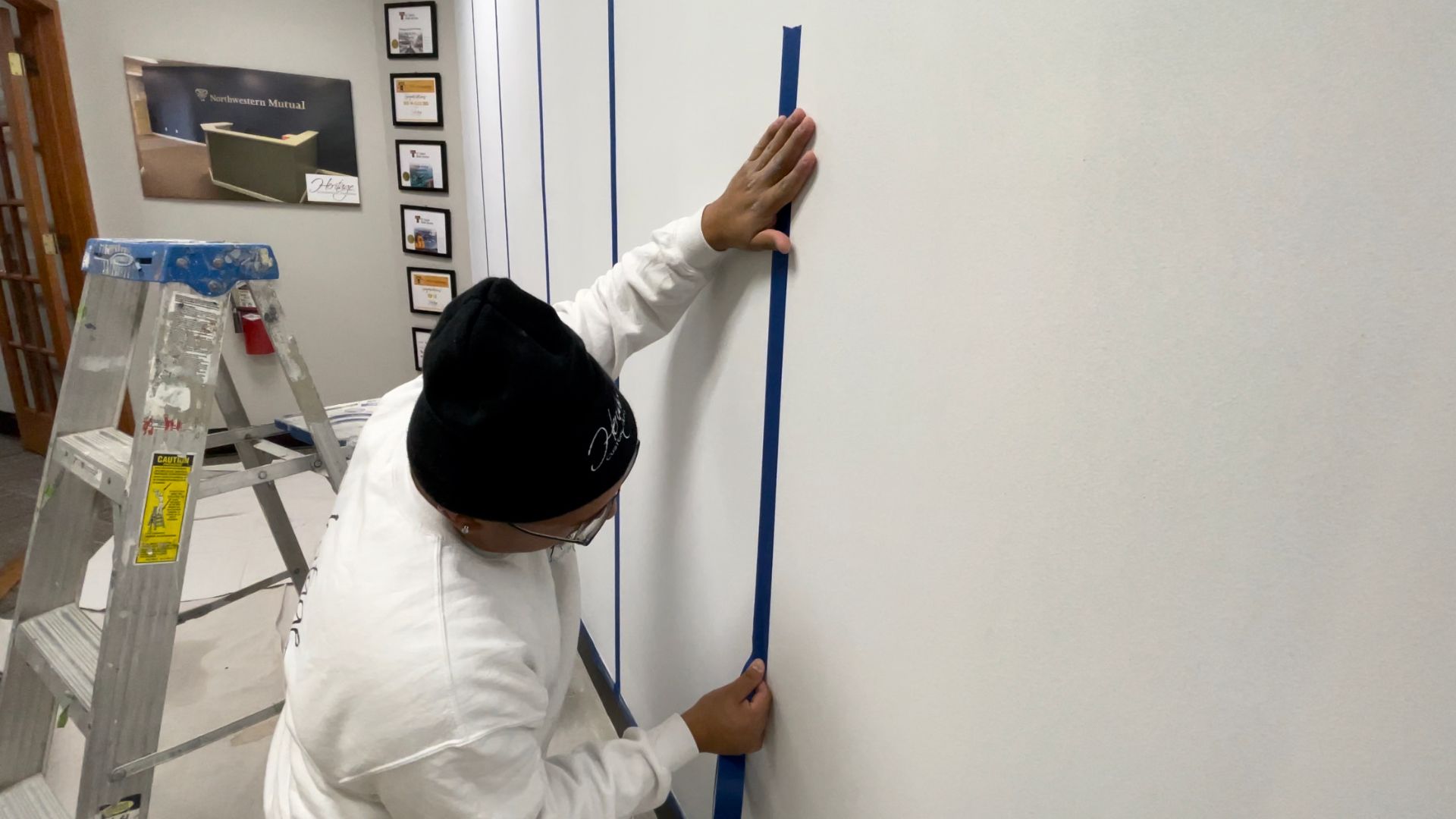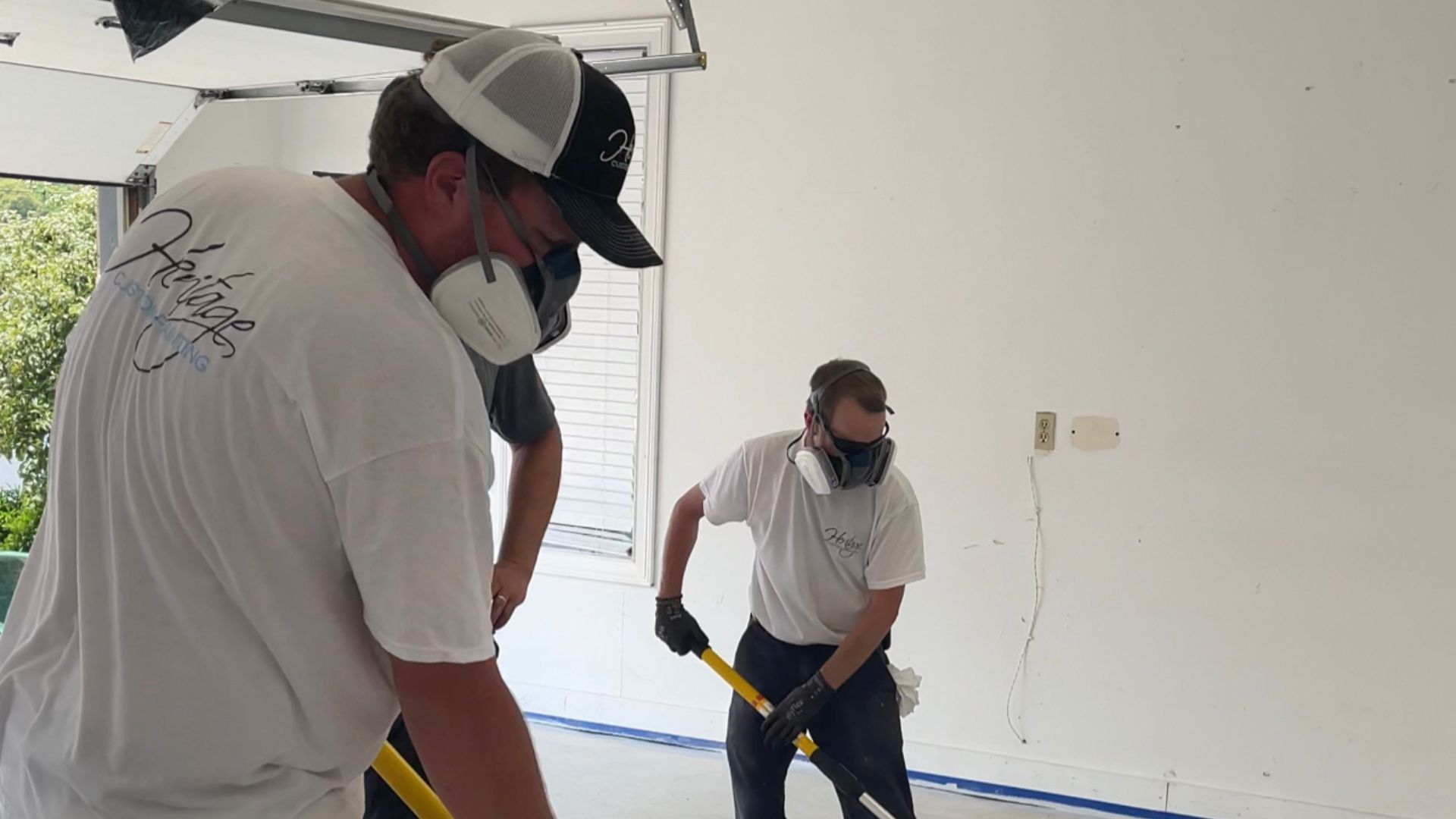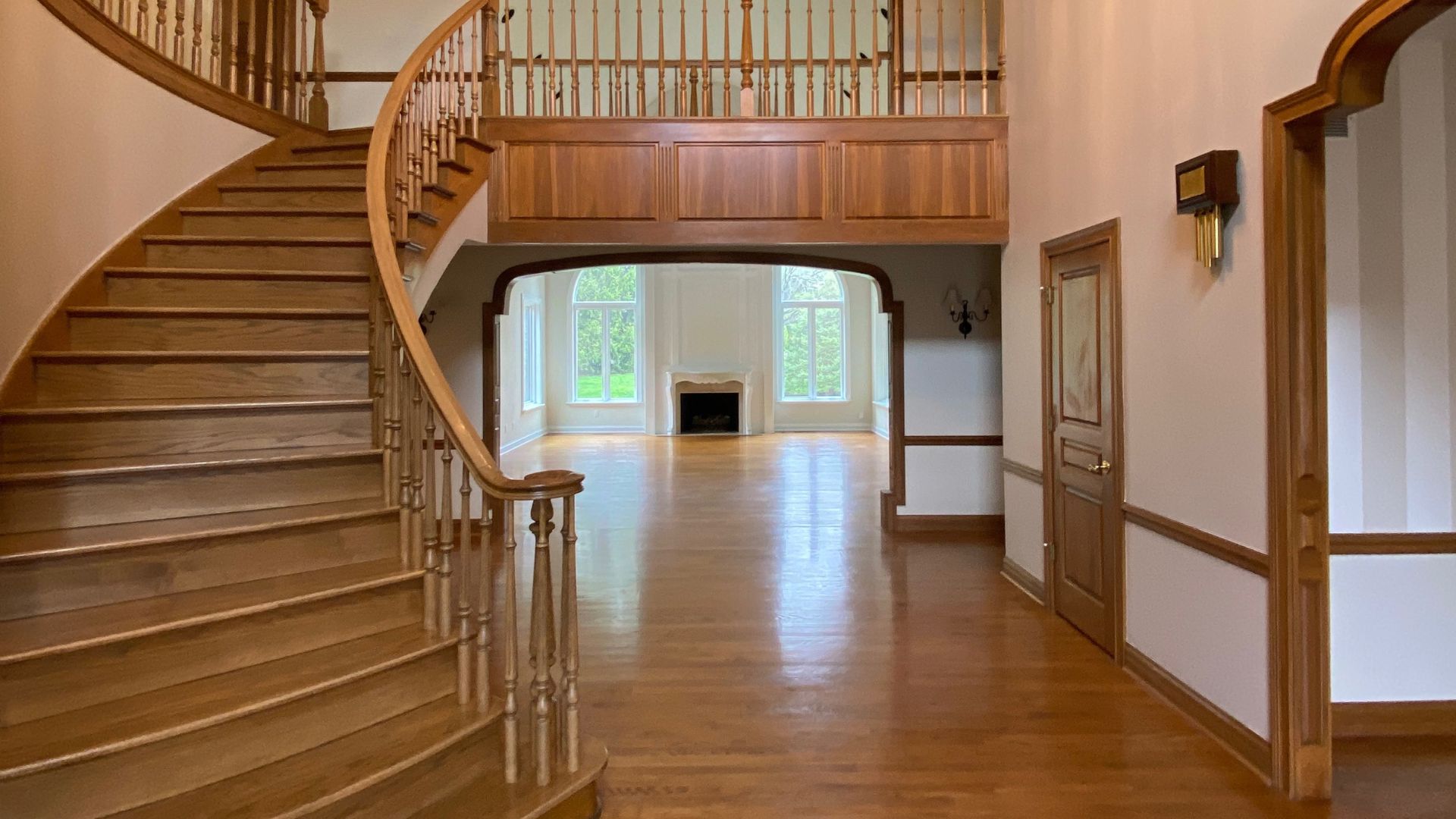Interior vs Exterior Paint – What’s The Difference?
Say you’ve recently had your house exterior painted, but you notice the interior trim can use some touching up. “No problem,” you think, “I can just use the leftover paint from the last guys.” So you go to the garage and get the paint, and there on the bottom of the can it says EXTERIOR PAINT. What does that even mean? Paint is paint, right? It’s basically the same thing regardless of where you use it, right?
Well, not exactly.
Paints are formulated depending on their use case. That means they have different properties to adapt to certain circumstances. Today we will go over the differences between interior vs exterior paint and why it’s important to use the right one for a certain area.
Recommended reading:
What is Backrolling Paint?
What is Backrolling Paint? If you’re interested in getting your home interior repainted, you have likely seen some videos of professional…
Important Questions to Ask Before You Hire a Professional Painter
Important Questions to Ask Before You Hire a Professional Painter Painting your house is a big deal and it requires a…
What is a VOC?
What is a VOC? If you do any amount of research into paint products, you will likely come across the term…
Does Heritage Paint Offices?
Does Heritage Paint Offices? Heritage Painting has a robust range of services for commercial clients, and we are happy to serve…
Can You Make My Wood Stain Lighter?
Can You Make My Wood Stain Lighter? Whether you are purchasing a new home with stained wood components or just aren’t…
What is a “Properly Painted Surface?” – PCA Standards Explained
What is a “Properly Painted Surface?” – PCA Standards Explained Heritage Painting works to a professional standard established by the Painting Contractors…
SOME TERMS TO KNOW
Before we break down interior vs interior paint, let’s go over a couple of terms to know. These terms refer to the components of paint, and how they actually affect the formula.
Solvent – This is the fluid that holds the rest of the elements of the paint. Solvent is also often referred to as the base. Oil-based paints were the most common products for years, but environmental concerns have made water-based products the dominant paint type. In many states, including Indiana, you can’t even get oil-based paint anymore. The solvent evaporates over time, leaving the other elements to adhere to the surface.
Resin – Resin is what actually binds the paint to the surface. The most common type of resin for residential paint is acrylic latex. However, depending on the material and prior treatment, other resins could be used. Resins can also vary wildly. Generally, exterior resins are much softer since they need to deal with swings in temperature and humidity. Softer resins can also expand and shrink with siding, which is especially important for wood siding.
Additive – Additives are special compounds added to the paint to give it certain qualities. Additives typically preserve the paint or make the product mold and mildew resistant. What additives are added to paint largely depends on its use case.
Pigment – Pigments are what actually give the paint its color. Most paints are a combination of various pigments to achieve the desired look.
Now that you know these terms, we can talk about the difference between exterior vs interior paint.
EXTERIOR PAINT NEEDS SUNLIGHT TO PROPERLY CURE
Since exterior paint is designed for the outdoors, it needs UV rays (aka sunlight) to properly harden and cure. Without that, the paint will be much more prone to failure. Exterior paint uses a softer resin, it is already prone to scuffing more than interior paint, and the additional weakness of poor curing will only worsen the problem.
INTERIOR PAINT ISN’T (ALWAYS) MOLD/MILDEW RESISTANT
Top-tier exterior paints are formulated to resist rain and snow, and as such, they are built to fight off mold and mildew. However, since interior paint is designed for a more temperate indoor environment, it doesn’t always have those protective additives.
Some products like Sherwin Williams’ Emerald have mold and mildew resistance, but this is mainly for use in bathrooms. Proper exterior paint will do much more to protect against these issues than interior paint with mold and mildew resistance properties.
EXTERIOR PAINT HAS A STRONGER ODOR
Exterior paint utilizes more VOCs (volatile organic compounds) than interior paints. This is most evident in their strong odor. The smell fades over time, but some paints can emit these hazardous compounds for years. Interior paints have little to no VOCs, and are therefore much safer to put inside your home.
INTERIOR PAINT IS WASHABLE
Interior paint is designed to withstand bumps and scrapes and is easier to wash. Exterior paint can withstand the elements, but it’s not designed to handle the daily wear and tear that interior paint endures. If you want your paint job to last for years, getting interior paint with a stiffer resin is critical. A stiffer resin will also make cleaning the painted surface a lot easier as its less likely to flake off.
And those are the major differences between interior vs exterior paint. There are other differences we could explore, but the point is clear. Exterior paint is designed for the specific conditions outdoors, and interior paint is meant to be inside.
If you plan on painting your home, it’s best to hire a professional contractor to do the work for you. An experienced painting professional will know exactly what product is best for you and your needs. That will save you from making costly mistakes that will cost you more in the long run.
Fill out the form below to get a free estimate from Heritage Painting. Our professional team will provide a detailed and accurate quote, and we can even help you select the best colors for your home. Let Heritage handle your interior or exterior project, and let this be the year you fall in love with your home again.
Get a Free Quote From Heritage Painting
Fill out the form below and experience the difference today.






